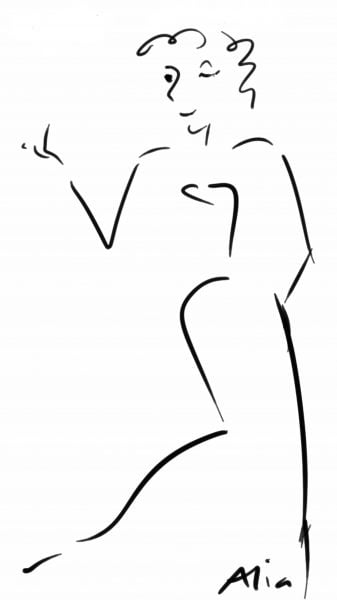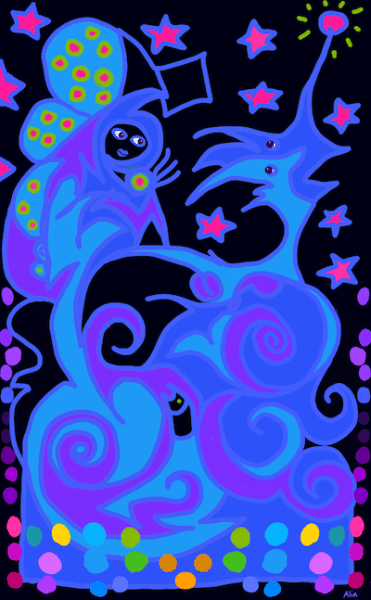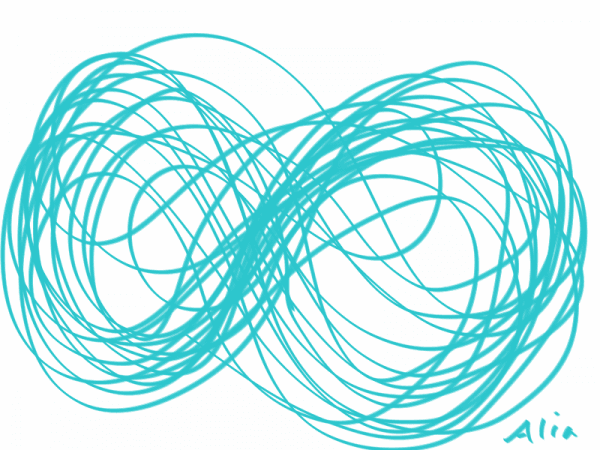But first, a message from our sponsor ; )
Joe Williams’ Show and Tell workshop was truly exceptional. The concepts we explored have made a deep impression on my approach to movement. It is available to stream through April 7. This is huge–Joe does not usually allow his classes to be recorded. If you are interested in the streaming option, I invite you to have a look here: https://alia.gumroad.com/l/show-and-tell-joe-williams. It is SO worth it! And alll the $ goes straight to Joe.
And now back to our regularly scheduled program ; )
Spacing IN…
I am pretty good at spacing out. It’s one of my main skills, lol. I was a figure model for art classes in my teens, and it was a perfect job for me–I didn’t have to do anything—just sit there—and there was always plenty flowing through my mind to keep me occupied (I also learned to accurately count seconds, another useful skill).
But spacing out is not so helpful for a dance practice focused on presence and embodiment.
What we want is more like spacing IN.
What might that be like?

Neil Gaiman is a marvelous writer. He’s won multiple Hugo and Nebula awards, and many of his books have been turned into films and television series (American Gods, Good Omens, Coraline). He’s also kind of an oddball, but who cares. His books are wonderful (my favorite is Neverwhere).
Recently, I was reading about Gaiman’s creative process.
He writes his drafts in longhand with a fountain pen (I firmly believe that handwriting has magical powers). He often rents hotel rooms for month-long writing blitzes, or at least goes to a café for dedicated writing time (+1 for writing in cafés and alternative spaces! It’s hard to do anything at home. I had to get up at 5am every day to write my book).
But more important is what he does during that dedicated writing time, when the writing doesn’t come. Or rather, what he doesn’t do—which is anything at all. If there are no words coming, Gaiman just sits there, staring at his paper until they do.
No chatting. No web surfing. No doodles or playing cat’s cradle with string. No Twitter posts. No reading. No anything. He waits. He stares at that page. He makes a space for the words, for the writing. He defends that space by avoiding anything that isn’t writing. He spaces IN.
Gaiman gets bored, waiting.
Boredom is an interesting space.
It leads to higher creativity. Things have a chance to surface when there is nothing else going on.
Walter Mosely (another wonderful writer), compares writing a novel to “gathering smoke.” You have to stay on it, be there every day, or it will get cold and float away.
We make space for dance with our 20 minutes. But even so, it’s very easy to space out—to let the body prance about while we debate what to have for dinner, or how early to get up tomorrow, or whatever the myriad barrage of random stuff that comes into our heads.
The more we let the mindless chatter go, the more we are just there with the music and the breath, the more things appear.
Many of us have found new ideas surface during our practice, have moves we forgot we knew turn up in our dance. We make the space and keep it open; as we learn to bypass mind’s nattering, those creative flashes become more frequent.
This is a skill. It is hard at first, but it gets easier with practice.
Music helps. It’s enlivening.
This week, I invite you to be bored.
Stay with the breath–rhythmic breath or long exhales. Twenty minutes is a great amount of time, because generally something will happen before it’s over ; )
Even if you lie on the floor with an empty mind listening to music (or not) for 20 minutes, well, things could be worse ; )
Music! It begins with Erik Satie’s Gnossiennes by the Cairo Steps and then keeps on going ; )
Love,
Alia







No comment yet, add your voice below!